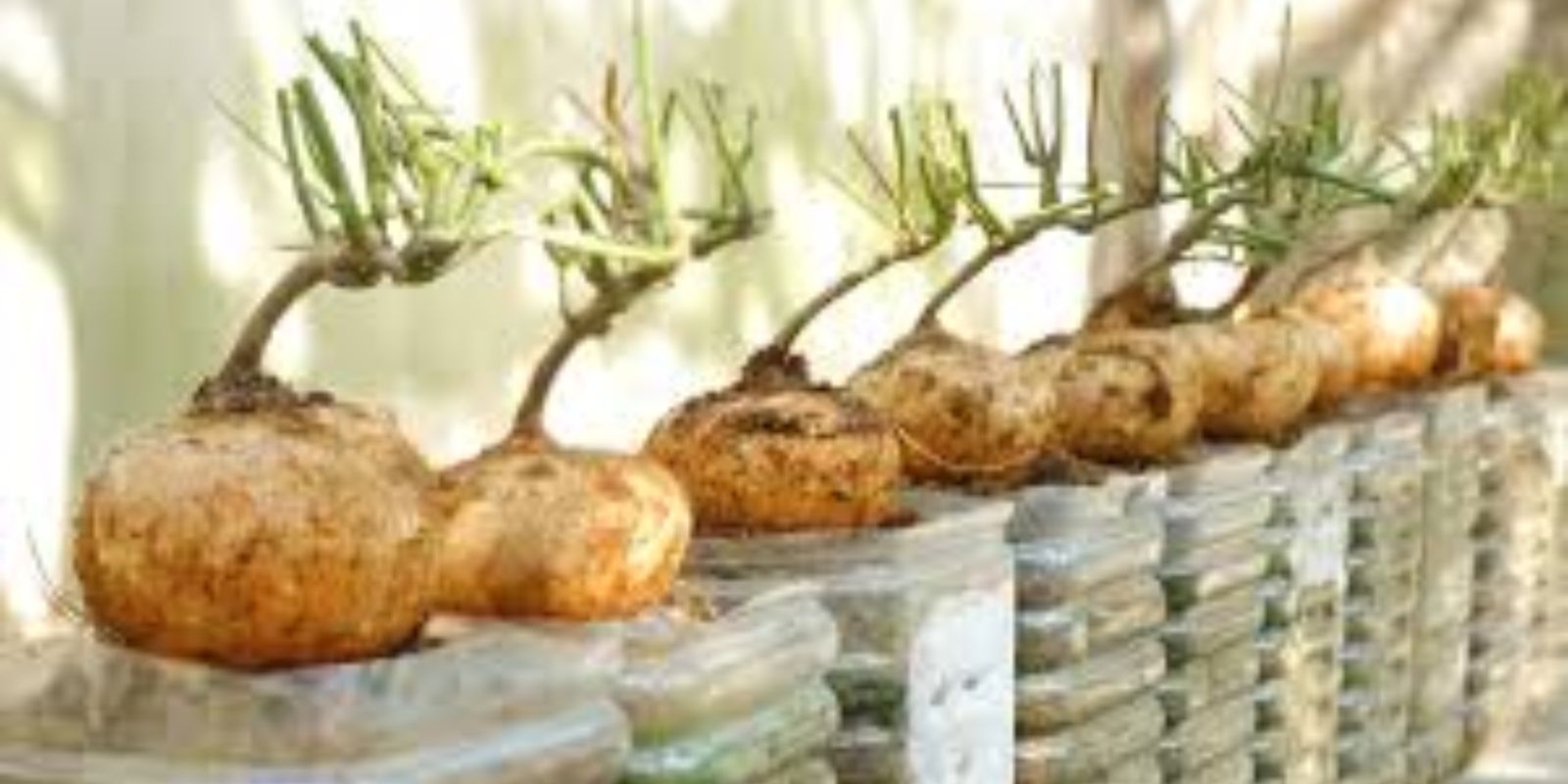Jicama (Pachyrhizus erosus), also known as Mexican yam bean or Mexican turnip, is a crunchy, sweet root vegetable that thrives in warm climates. This nutritious tuber is packed with fiber, vitamin C, and essential nutrients, making it a fantastic addition to any home garden. Growing jicama requires patience, but with the right conditions and care, you can enjoy a bountiful harvest.
In this comprehensive guide, we’ll take you through everything you need to know about growing jicama in your garden, from planting to harvesting.
1. Understanding Jicama’s Growing Requirements
Before planting jicama, it’s important to understand its basic growing needs:
- Warm Climate: Jicama requires a long growing season of at least 5–9 months of warm weather.
- Full Sun: It thrives in direct sunlight and should receive at least 6–8 hours of sun daily.
- Well-Draining Soil: Loose, sandy, or loamy soil with good drainage is ideal.
- Support for Vines: Jicama plants develop long, sprawling vines that benefit from a trellis.
2. Choosing the Right Seeds or Tubers
Jicama is typically grown from seeds rather than tubers, as it is difficult to propagate from cuttings. Seeds are widely available online or at specialty garden centers. If you live in a cooler climate, consider starting seeds indoors to give them a head start.
3. Preparing the Soil
- Select a Planting Site: Choose an area with full sun and well-draining soil.
- Loosen the Soil: Dig down at least 12 inches to create a loose, airy environment for root development.
- Add Organic Matter: Mix in compost or aged manure to provide essential nutrients.
- Check the pH Level: Aim for a slightly acidic to neutral soil pH (6.0–7.0).
4. Planting Jicama Seeds
- Soak the Seeds: Soaking jicama seeds in warm water for 24 hours before planting improves germination.
- Plant Depth and Spacing: Sow seeds about 1 inch deep, spacing them 12–18 inches apart in rows.
- Water Regularly: Keep the soil evenly moist but not waterlogged.
- Use a Trellis: Providing a trellis helps manage the vines and encourages healthier growth.
5. Watering and Fertilization
- Watering: Jicama needs consistent moisture but does not tolerate soggy soil. Water deeply once or twice a week.
- Mulching: Apply a layer of organic mulch to help retain moisture and suppress weeds.
- Fertilization: Use a balanced fertilizer (10-10-10) or compost tea every 3–4 weeks to support growth.
6. Supporting Healthy Growth
- Pruning: Trim excessive vine growth to redirect energy toward tuber development.
- Pest Control: Keep an eye out for aphids, whiteflies, and spider mites. Use neem oil or insecticidal soap if needed.
- Disease Prevention: Avoid overwatering to prevent root rot and fungal infections.
7. Understanding Jicama’s Growth Cycle
Jicama plants focus on vine and leaf growth for the first few months. The tubers begin developing later in the season. Patience is key, as jicama takes 5–9 months to reach maturity.
8. Harvesting Jicama
- Check for Maturity: Jicama is ready to harvest when the vines begin to yellow and die back.
- Dig Carefully: Use a garden fork or shovel to gently unearth the tubers without damaging them.
- Clean and Store: Wash off excess dirt, dry the tubers, and store them in a cool, dry place.
- Avoid Eating the Leaves and Pods: Jicama vines and seeds are toxic and should not be consumed.
9. Storing and Using Jicama
- Storage: Fresh jicama can last for several weeks when stored in a cool, dark place.
- Culinary Uses: Enjoy jicama raw in salads, slaws, and salsas, or cook it in stir-fries and soups.
Final Thoughts
Growing jicama in your garden is a rewarding experience, especially if you love fresh, homegrown vegetables. With proper care, patience, and the right growing conditions, you can harvest delicious, crunchy jicama right from your backyard.
🌱 Have you tried growing jicama before? Share your experience in the comments below! 👇
#Jicama #GrowYourOwnFood #OrganicGardening #RootVegetables #HealthyEating #GardenFresh #HomegrownGoodness #GardeningTips #SustainableLiving #GreenThumb

